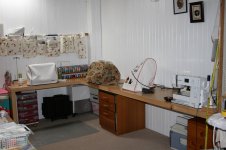Mini Me
Member
I have built quite a few TB's so the process and build details are not a problem but now I want to build some more that will be long shelves carrying quite a bit of weight and I wonder if anyone knows of any way to calculate the depth if I specify the materials to be used so I don't over build them. To give you an idea of a past project I built a 3.6 metre TB that is unsupported except at the ends, it is loaded with 6 sewing machines and has never bent just deflected slightly. That one had 6mm MDF top and bottom skins with a 3mm MDF grid 50mm deep and it is very light as TB's should be. Are there any engineers here or can a specification even be calculated for a TB built in MDF? I have done the search but can't find anything that I might use and even if I did I would not be able to do the maths anyway so any help would be appreciated. Thanks.

